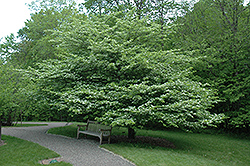It's all about ...
plants

Height: 30 feet
Spread: 30 feet
Sunlight:
![]()
Hardiness Zone: 3b
Other Names: Thicket Hawthorn
Description:
A common roadside companion plant, but not common in commerce; a good landscape ornamental with showy white flowers in spring followed by red fruit in fall, uniquely horizontal branching habit; can be susceptible to rust, quite thorny
Ornamental Features
Dotted Hawthorn is primarily grown for its highly ornamental fruit. The fruits are showy red pomes carried in abundance from early to late fall. The fruit can be messy if allowed to drop on the lawn or walkways, and may require occasional clean-up. It is covered in stunning clusters of white flowers held atop the branches in late spring. It has green deciduous foliage. The serrated lobed leaves turn an outstanding orange in the fall.
Landscape Attributes
Dotted Hawthorn is a deciduous tree with a more or less rounded form. Its average texture blends into the landscape, but can be balanced by one or two finer or coarser trees or shrubs for an effective composition.
This tree will require occasional maintenance and upkeep, and is best pruned in late winter once the threat of extreme cold has passed. Gardeners should be aware of the following characteristic(s) that may warrant special consideration;
- Disease
- Spiny
Dotted Hawthorn is recommended for the following landscape applications;
- Accent
- Hedges/Screening
Planting & Growing
Dotted Hawthorn will grow to be about 30 feet tall at maturity, with a spread of 30 feet. It has a low canopy with a typical clearance of 3 feet from the ground, and should not be planted underneath power lines. It grows at a slow rate, and under ideal conditions can be expected to live for 50 years or more.
This tree should only be grown in full sunlight. It is very adaptable to both dry and moist growing conditions, but will not tolerate any standing water. It is not particular as to soil type or pH. It is highly tolerant of urban pollution and will even thrive in inner city environments. This species is native to parts of North America.
This plant is not reliably hardy in our region, and certain restrictions may apply; contact the store for more information.

